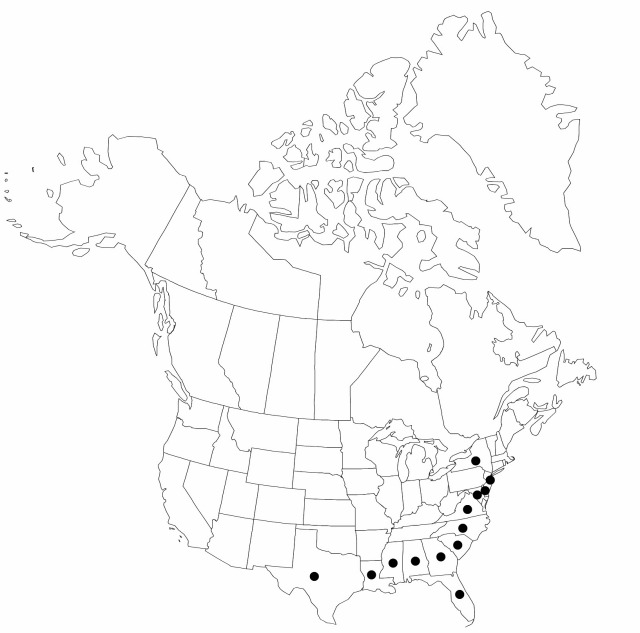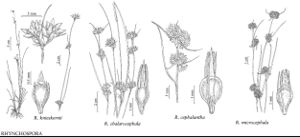Difference between revisions of "Rhynchospora cephalantha"
Ann. Lyceum Nat. Hist. New York 3: 218. 1835.
FNA>Volume Importer |
FNA>Volume Importer |
(No difference)
| |
Revision as of 21:07, 16 December 2019
Plants perennial, cespitose, 40–100(–150) cm; rhizomes absent. Culms arching, leafy, obscurely and convexly trigonous, multi-ribbed, slender to stoutish. Principal leaves overtopped by culm; blades linear, flat proximally, 1.5–3 mm wide, apex tapering, trigonous. Inflorescences: spikelet clusters 3–several, widely spaced, often equidistant, mostly hemispheric to globose, occasionally lobed, 1–2 cm thick; bracteal leaves much exceeding subtended inflorescence. Spikelets dark red-brown to dark brown, lanceellipsoid to ellipsoid, 4–5(–6) mm, apex acute; fertile scales elliptic, 3–3.5(–4.5) mm, apex acute, midribs 3, laterals indistinct. Flowers: perianth bristles 6, reaching tubercle tip, retrorsely (rarely antrorsely) barbellate. Fruits 1(–2) per spikelet, 3.5–4(–4.2) mm; body brown with pale center, obovoid distal to stipe, lenticular, 2–2.3 × 1–1.5(–2) mm; tubercle triangular-subulate, (1–)1.5–2 mm, at least 0.5 mm wide at base.
Phenology: Fruiting summer–fall.
Habitat: Sandy silts, sands, and peats of shores, boggy streams, seeps, savannas, and savanna bogs
Elevation: 0–200 m
Distribution

Ala., Del., Fla., Ga., La., Md., Miss., N.J., N.Y., N.C., S.C., Tex., Va.
Discussion
North American plants referred to Rhynchospora axillaris (Lamarck) Britton [Phaeocephala axillare (Lamarck) House by N. L. Britton and A. Brown (1913) and J. K. Small (1933)] are actually R. cephalantha. A photograph of the type specimen of Schoenus axillaris Lamarck (from P) reveals what appears to be an immature top of S. glomeratus [R. glomerata (Linnaeus) Vahl].
Selected References
None.
